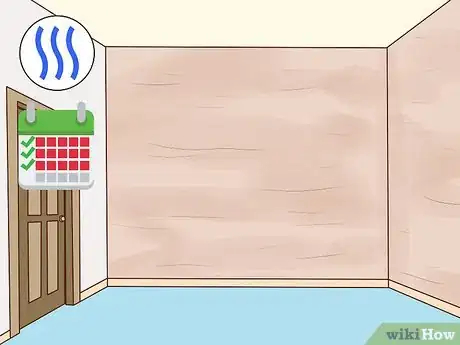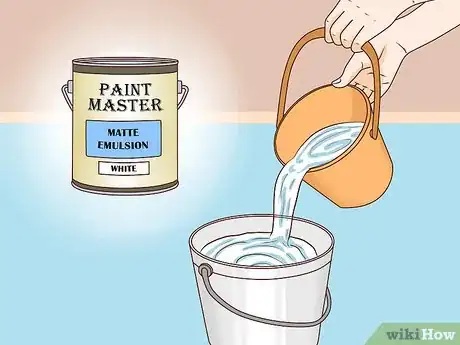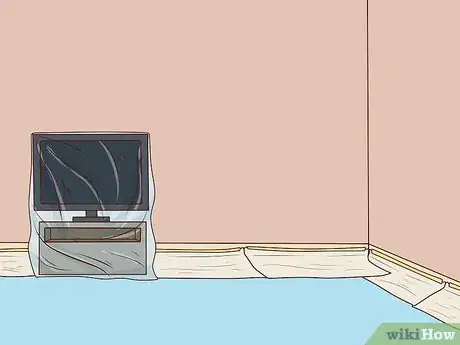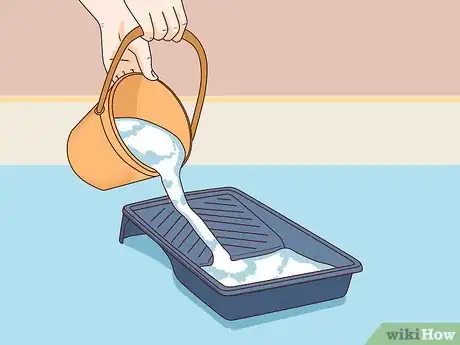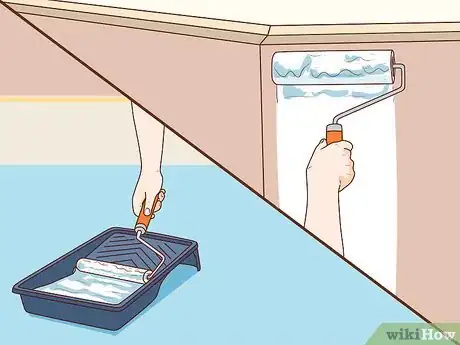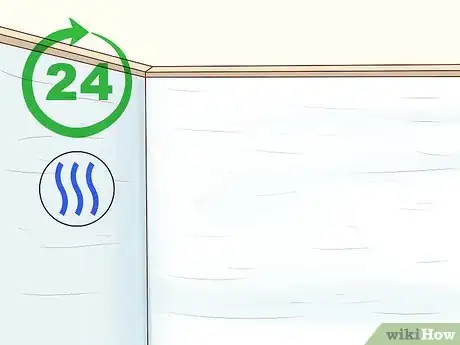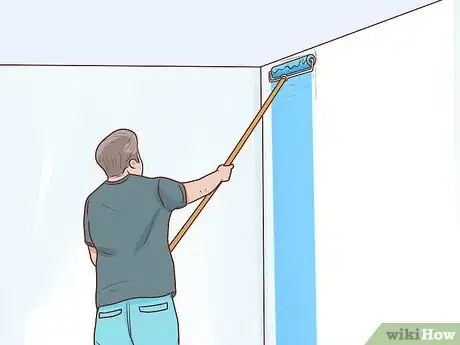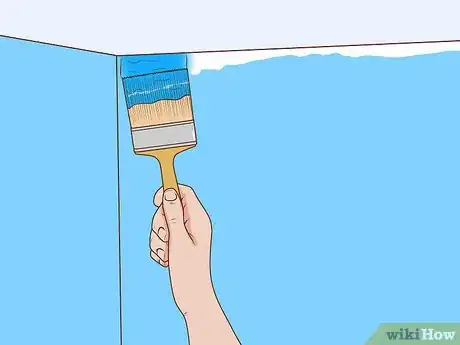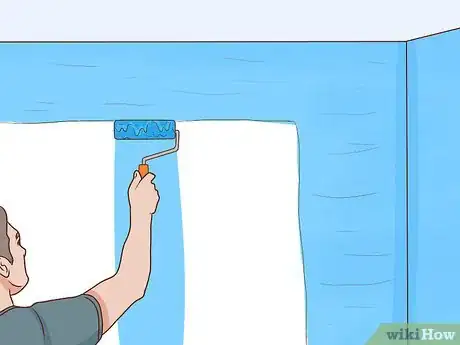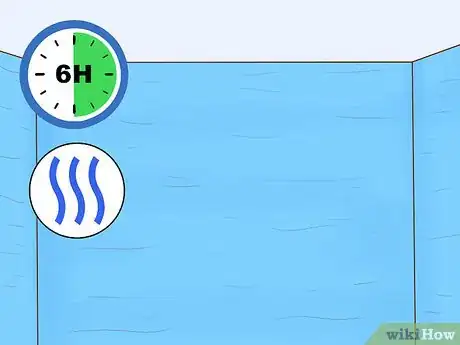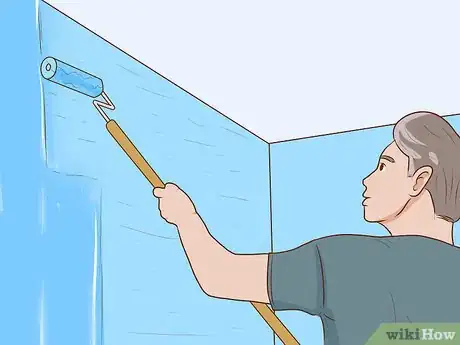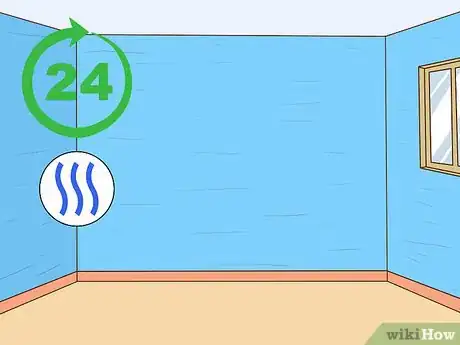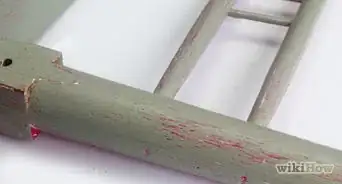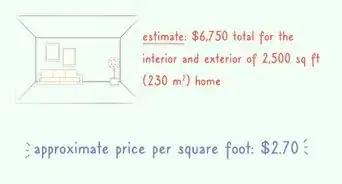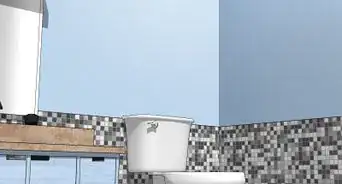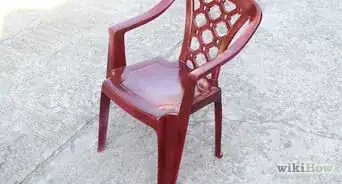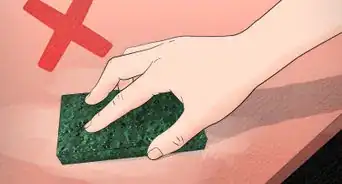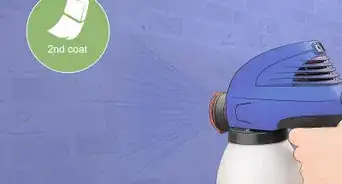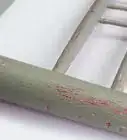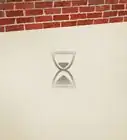This article was co-authored by wikiHow Staff. Our trained team of editors and researchers validate articles for accuracy and comprehensiveness. wikiHow's Content Management Team carefully monitors the work from our editorial staff to ensure that each article is backed by trusted research and meets our high quality standards.
This article has been viewed 15,357 times.
Learn more...
Painting fresh plaster is an easy task that you can do yourself. Just be sure to wait 3-4 weeks until it the plaster is completely dry to paint it. After that, go ahead and seal it with a "mist coat," then proceed to paint it with regular water-based wall paint. In no time at all, your newly-plastered walls will have a whole new look!
Steps
Sealing and Priming New Plaster
-
1Let the plaster dry for 3-4 weeks until it is a light, uniform color. Fresh plaster dries at different speeds based on many factors. In most cases, 3-4 weeks is sufficient time for new plaster to dry, but the best way to tell is by checking that there are no darker spots on the plaster.[1]
- Plaster can dry in as little as 2 weeks in very warm and dry conditions or as many as 6 weeks (or longer) in colder or more humid conditions. Other factors that affect how long it takes include the type of plaster and how many coats there are.
- A freshly-plastered wall will be a dark, uniform color. As it dries out over time there will be lighter and darker areas. Wait until the whole wall is a single light shade before you paint it.
- If you paint before the plaster is fully dry, then you will just trap the moisture in the plaster behind a layer of paint, which can lead to problems such as mold.
-
2Mix 3 parts of matte emulsion paint with 1 part water to make a mist coat. Matte emulsion paint is a general purpose water-based paint that is available in all home improvement or paint stores. Mix water and matte paint that is a shade lighter than the color you are planning to paint your wall with to create a diluted mist coat.
- A mist coat will create a base coat that is easy to paint over and will require fewer coats to get a solid finish on your walls.
- Buy a cheaper emulsion paint for the mist coat than the paint that you are going to use for the top coat.
Warning: Never use oil or vinyl-based paints to create your mist coat, as these types of paint will not properly bind with the plaster or allow the plaster below to breathe.
Advertisement -
3Put down dust sheets on the floor and cover any nearby furniture. Place canvas or plastic drop sheets down on the floors and over any furniture to protect them from paint splatters. Mist coat is messier than normal paint because it is thinner and more prone to splashing.
- If possible, move furniture out of the room you are painting. Only leave large pieces that you absolutely can’t move out of the room and move them as far from the walls (towards the center of the room) as you can before covering them.
-
4Pour the mist coat into a paint tray. Dump enough of the mist coat into the paint tray to fill the deeper part of the container. Use a 7–12 in (18–30 cm) tray, depending on the size of the roller you are going to use.
- Use a 7 in (18 cm) roller for smaller walls, and a 12 in (30 cm) roller for larger walls. Rollers come in all sizes in between 7–12 in (18–30 cm), so pick a size that seems most appropriate and comfortable for painting your walls.
-
5Roll the mist coat onto the wall with a foam paint roller. Dip the roller into the paint tray and roll it onto the roller evenly in the angled part of the tray. Roll it onto the wall in long strokes from top to bottom. Work from left to right if you are right-handed, and right to left if you are left-handed.[2]
- Since the plaster is so absorbent, the mist coat will start to dry quickly. Make sure to roll away any drips immediately to avoid an uneven finish.
-
6Let the mist coat dry for 24 hours before you paint over it. The mist coat will dry to the touch within 1 hour, but you need to let it completely dry and fully absorb into the new plaster before you apply a top coat. You don’t need to apply a second coat of mist coat.[3]
- As with plaster, the time it takes for a mist coat to dry varies with the temperature and humidity conditions. Let the mist coat dry for a full day to be safe.
Applying the Top Coats
-
1Start in the top corner opposite the side of your dominant hand. Start in the top left corner if you are right-handed, and in the top right corner if you are left-handed. This will minimize the mess you make while painting because you will work in the direction of your dominant hand.[4]
- For example, if you are right-handed and you start in the top left corner, you will naturally work from left to right and will be able to more comfortably paint the wall with an even coat and avoid splashes.
Tip: Use a high-quality water-based top coat to ensure a nice finish on the new plaster. A general rule is the more you spend on paint, the less you’ll have to paint.
-
2Use a 4 in (10 cm) paintbrush to paint in all the corners. Paint from top to bottom along the vertical edges in the corners of the wall. Paint in 1 direction along the horizontal corners where the wall meets the ceiling and floors as well.[5]
- Be especially careful if you are painting adjacent to other walls that are already painted and that you don’t want to paint over. You can even use blue painters tape to cover the corners of adjacent walls if you aren’t confident in your brush strokes.
- This is called “cutting in” and will make it much easier and faster to fill in the rest of the wall with a roller.
-
3Fill in the rest of the wall with a paint roller. Roll in vertical straight lines and cover the top half of the wall first, then finish with the bottom. Work from left to right if you are right-handed, and right to left if you are left-handed.[6]
- Remember to keep an eye out for streaks or uneven spots as you work. Roll over any rough areas to smooth them out.
-
4Allow the first coat to dry for at least 6 hours or overnight. Most first coats will be dry enough to paint over after 6 hours, but give it a full night if you aren’t sure. You will be able to see any patchy spots more clearly after you let the first coat dry completely so you can apply a more even second coat.[7]
- It’s easy to get impatient and start painting as soon as the first coat feels dry to the touch. You will end up with a much more professional-looking coat of paint if you are patient and wait until the first coat is completely dry to add the second.
-
5Apply a second coat in the same way you applied the first. Work in the direction of your dominant hand and from top to bottom. Pay special attention to any areas that look bare after the first coat.[8]
- After 2 coats, you will usually have a nice even coat of paint on the plaster and you won’t need to apply any more. This is where having a high-quality top coat paint really matters since some cheaper paints will require more coats to get the same kind of finish.
-
6Let the paint dry for 24 hours before putting anything on the walls. Most paint will be dry faster than this. However, lean towards the safe side and let it dry for a full 24 hours.[9]
- As long as you let your plaster dry long enough, and followed the correct sealing and painting process, then you won’t need to do anything else to your walls at this point. If you went wrong somewhere, such as not letting the plaster dry enough, then you may see the top coat begin to flake eventually.
Things You’ll Need
- Matte emulsion paint
- Water
- Paintbrush
- Foam roller
- Paint tray
- Topcoat wall paint
- Drop sheets
References
- ↑ https://www.diydoctor.org.uk/projects/paintnewplaster.htm
- ↑ https://home.bt.com/lifestyle/house-home/diy-ideas/5-things-you-need-to-know-before-painting-freshly-plastered-walls-11364170736558
- ↑ https://www.diydoctor.org.uk/projects/paintnewplaster.htm
- ↑ https://www.realhomes.com/advice/how-to-paint-on-new-plaster
- ↑ https://www.diydoctor.org.uk/projects/paintnewplaster.htm
- ↑ https://www.diydoctor.org.uk/projects/paintnewplaster.htm
- ↑ https://www.diydoctor.org.uk/projects/paintnewplaster.htm
- ↑ https://www.diydoctor.org.uk/projects/paintnewplaster.htm
- ↑ https://www.diydoctor.org.uk/projects/paintnewplaster.htm
